Piston vibrators use the impact action produced by the oscillating piston to flex the bin wall. This flexing action loosens material stuck to the wall, thus restoring material flow. In general, there are two styles of pneumatic piston vibrators: Impacting and Air-Cushioned (or non-impacting).
Impacting models allow the internal piston to strike the base of the vibrator, producing the greatest amount of force and frequency. Air-Cushioned models use a cushion of air to dampen the piston movement, so the piston reverses direction before impacting the vibrator base. Therefore, Air-Cushioned models are more quiet but also produce less force and frequency than the Impacting models.
Applications:
- Used on bins, hoppers, railcars, foundry match plates, feeders, and concrete screeds.
- Pneumatic piston vibrators are used for material handling problems that do not respond well to high-frequency rotary vibration. They can be effective where other devices fail, freeing materials that tend to cling, clump, or stick, such as damp or oily solids.
- Piston vibrators are also used where the air supply is limited, because they consume much less air than most pneumatic rotary vibrators.
- The linear force of a piston vibrator can produce the back-and-forth motion needed for feeders and shaker screens.
Features:
- Maximum Force - Impact (IM) model produces vibration of maximum force & frequency.
- Quiet Model Available - Air-Cushioned (AC) model produces less noise than Impact models.
- Energy Efficient - Most efficient piston vibrators available today. Require less than 10 CFM even for largest models.
- More Force - Longer piston stroke provides more energy to move material than competitively sized vibrators. Impact (IM) models produce 100-200% more force per CFM of air than the competition. Air-Cushioned (AC) models produce 7-60% more force per CFM.
- Lightweight - 50-70% lighter than competitively sized piston vibrators.
- Durable - Specially designed all steel alloy housing tougher than cast iron. Operates at air pressures up to 100 PSI. Most competitive piston vibrators cannot exceed 60-80 PSI.
- Versatile - Easy to control force and frequency by adjusting air supply.
- Easy to Mount - Single mounting bolt. Mount kits available. Easy to interchange with other brands. Safety cable ready.
- Shielded Exhaust Ports - Special high grade, oil resistant Mil Spec neoprene shields keep out contaminants. Optional heavy-duty Tuff Bands are available for extremely dirty environments or portable use. Tuff Bands also redirect air exhaust to cool vibrator.
- Trouble-free Operation - No required maintenance if using filtered, lubricated air. Spring ensures reliable start-ups in all mount orientations. Engineered to protect spring from impact, giving longer life.
- Wear Resistant Piston - Special design to withstand harsh conditions and prevent seizing of piston when limited lubrication is used. Standard on all 3"models and all Railcar models.
- Five Year Warranty
Options:
- Available in either Impact (IM) or Air-Cushioned (AC) models.
- Wear Resistant models (YJW) - Special proprietary synergistic coating extends piston life under harsh conditions and prevents seizing of piston if limited lubrication used.
- Railcar models (YJR) - Include wedge mount to fit standard railcar pockets, Wear Resistant piston, & Tuff Band Exhaust Port Shields. Easy to handle. 35-50% lighter than traditional railcar vibrators which weigh 70+lbs. Faster 2" Impact (IM) model weighs just 22 lbs and the 3"Air-Cushioned (AC) model weighs only 36 lbs.
- Matchplate models (YJM) - Impact type with universal base mount used on foundry matchplates. Internal spring allows any mount orientation.
- Screed models (YJS) - Impact type used on screeds.
Operating Requirements:
- Filtered, lubricated air.
- 25-80 PSI depending on model. 1-9 CFM.
- Maximum Ambient Temperature = 250°F (120°C).
Specifications
(A) Inch |
N/A 10.81 |
(C) Inch |
N/A 2.50 |
(D) Inch |
N/A 1/4 |
(E) Inch |
N/A 6.5 x 6 |
Frequency at 40 psi (CPM) |
N/A 2400 |
Air Consumption at 40 psi |
N/A 6.5 cfm |
Force at 40 psi |
N/A 3200 lbs |
Frequency at 60 psi (CPM) |
N/A 3000 |
Air Consumption at 60 psi |
N/A 13.5 cfm |
Force at 60 psi |
N/A 5200 lbs |
Frequency at 80 psi (CPM) |
N/A 3500 |
Air Consumption at 80 psi |
N/A 19.0 cfm |
Force at 80 psi |
N/A 7000 lbs |
Manufacturer |
N/A Global |

